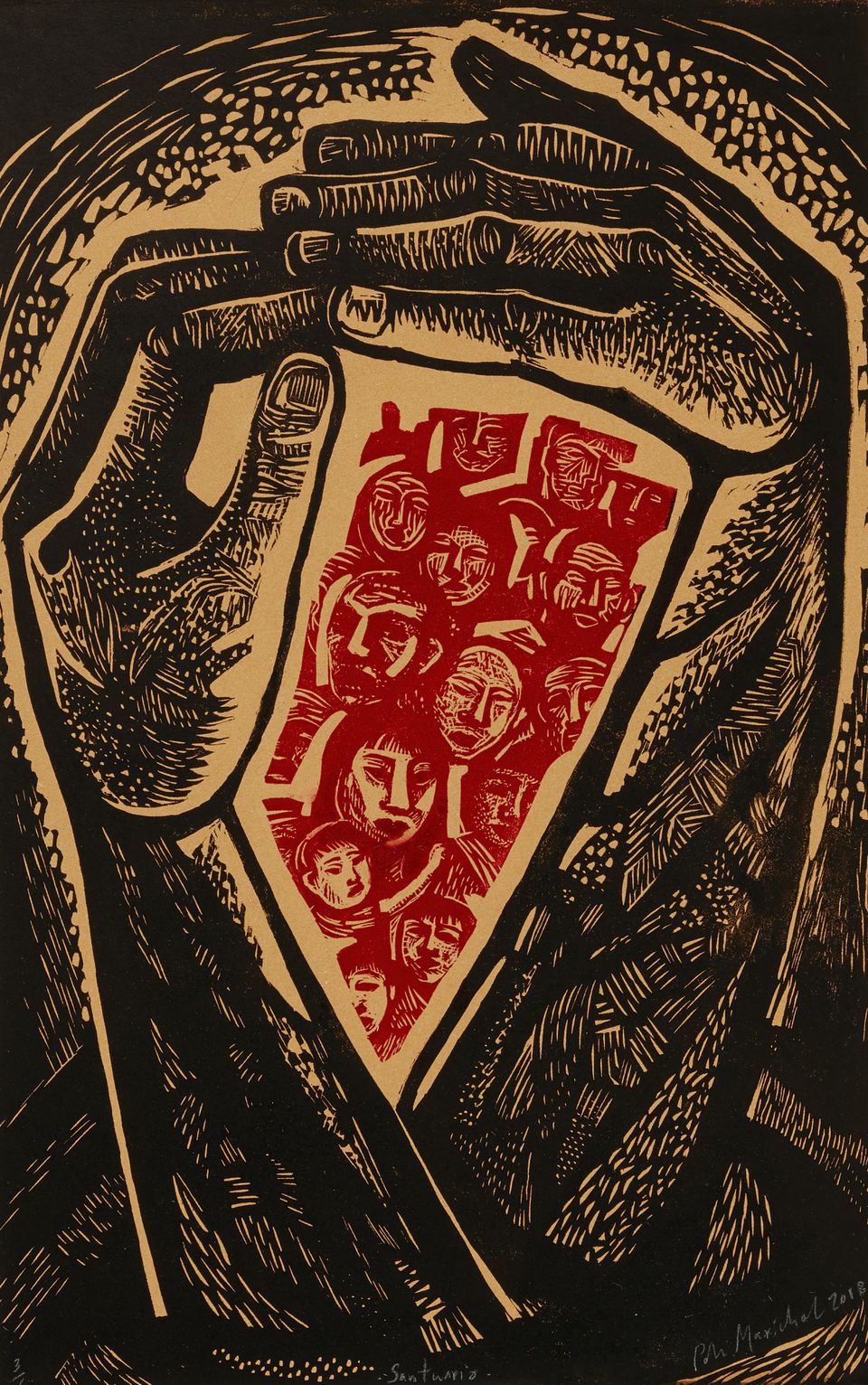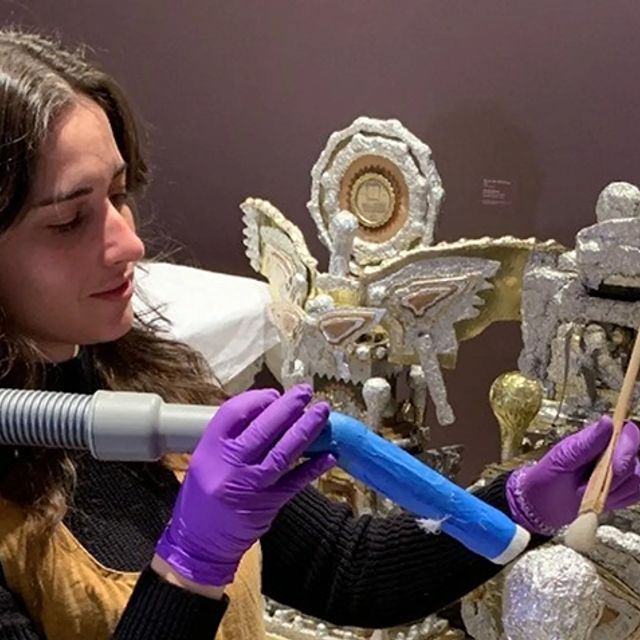
Poli Marichal, Santuario, 2018, linocut on paper, Smithsonian American Art Museum, Museum purchase through the Frank K. Ribelin Endowment, 2020.32.5, © 2020, Poli Marichal
About this Artwork
When Marichal moved from Puerto Rico to Los Angeles, she found a home at Self Help Graphics (est. 1970), one of the first Chicano print centers in the United States. Her dramatic linear style and linocut technique connects her work to a long history of political graphics in Mexico and Puerto Rico. Santuario, which portrays men, women, and children protectively held within two strong arms, conjures sanctuary cities as places where undocumented immigrants are afforded basic protections. She created the print as the Donald Trump administration threatened to defund sanctuary cities and implemented controversial policies against asylum seekers at the U.S.-Mexico border.
Acerca de esta obra
Cuando Marichal se mudó de Puerto Rico a Los Ángeles, encontró un hogar en Self Help Graphics (est. 1970), uno de los principales centros de grabado de los chicanos en los Estados Unidos. Su dramático estilo lineal y su técnica de linograbado vinculan su trabajo con una larga historia de artes gráficas políticas en México y Puerto Rico. Santuario, que describe a hombres, mujeres y niños sujetados para protegerlos por dos brazos fuertes, evoca las ciudades santuario como lugares donde los inmigrantes indocumentados reciben protecciones básicas. Creó el grabado cuando el gobierno de DonaldTrump amenazó con negarles el financiamiento a las ciudades santuario y aplicó políticas controvertidas contra los solicitantes de asilo en la frontera entre México y los Estados Unidos.













